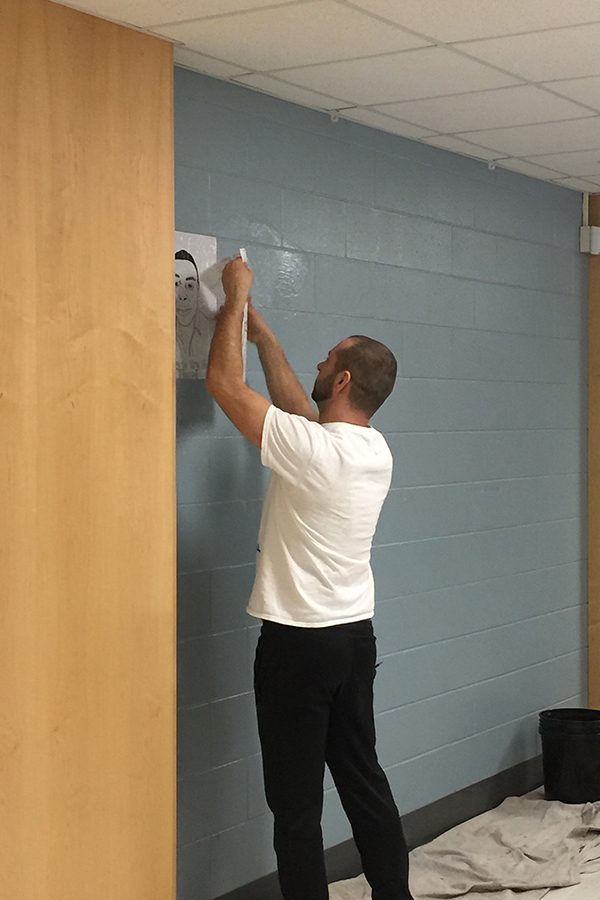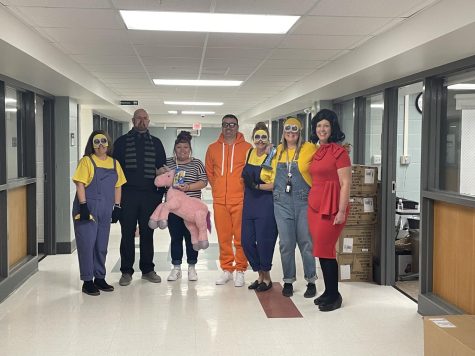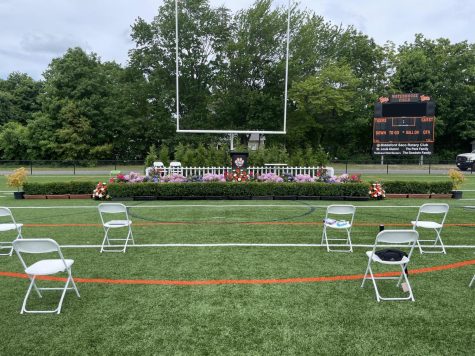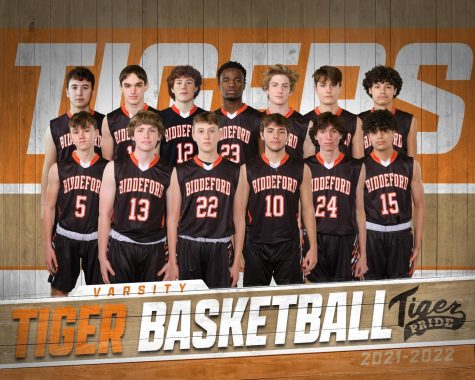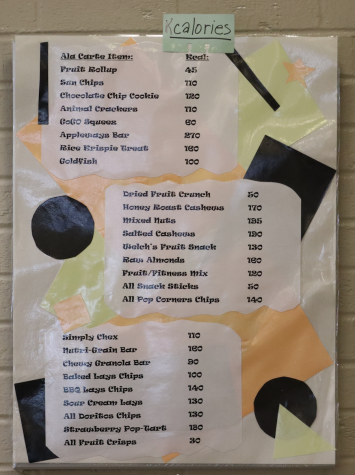Defining a mainer
Local artist helps students challenge ideals brought out by Maine residents through art
March 29, 2017
When driving under a bridge or by abandoned buildings, everyone sees street art, but very few take the time to think about the culture behind it. But to some, street art is the best way to get a message across.
On Wednesday, March 1st, the Biddeford High School Civil Rights Team brought in a street artist Orson Horchler, who goes by Pigeon, to talk about diversity and inclusion, as well as to tell his story. Civil Rights Team adviser, Ms Shari Brinkman-Young, was one of the people in charge of bringing Pigeon into the school.
“Last spring we went to the Civil Rights conference up in Augusta,” said Brinkman-Young. “Pigeon’s artwork was on display and he spoke at the conference and our students were really excited about it. He had always done graffiti work and portraits of people who lived in Maine and who worked in Maine but weren’t the traditional ‘Third Generation Maniac.”
For the Civil Rights Team, getting Pigeon to come talk to the students was a goal, and by trying hardest, they were able to secure him as a speaker.
“Biddeford was one of eight schools that was selected to take part and have Pigeon come and talk to our students,” said Brinkman-Young. “We had to fill out an application, and out of 200 applications submitted, we were one of the eight that won.”
Pigeon wasn’t a Maine native, having been born in France, and because of his birth across the Atlantic, his story focused on him feeling out of place in the rural communities of northern Maine.
“Pigeon’s work was initially done in Bangor, but he grew up in France,” said Brinkman-Young. “It was his experience in Bangor that, because he had an accent and because he wasn’t a third generation ‘Maniac,’ that people assumed he wasn’t a Mainer.”
While the unspoken rules of being a true “Mainer,” agreed upon by most in the state, requires at least three generations of family members born and raised in Maine, Civil Rights Team advisor, Mr. Jon Edstrom, sees few differences between Pigeon and true “Mainers.”
“The thing that struck me was that he didn’t feel included in the places that he lived because he was different,” said Edstrom. “Really, he was only different because of his accent and he was from another country.”
Edstrom believes that having a minor difference shouldn’t exclude anyone from being a part of a specific group.
“I think that is the universal message for lots of people,” said Edstrom. “Whether you’re an immigrant, moving to a new school, or there’s something different about you, whether a disability or your sexuality or anything else, some people don’t feel included or welcome.”
To the Civil Rights Team, bringing Pigeon in was a part of their overall goal of accepting everyone, hopefully bringing a greater sense of acceptance to those who didn’t feel it originally.
“The hope of his presentation was that by having conversations with people who aren’t exactly like you and working on a project together, that a lot of those implicit biases that people have will be shattered,” Brinkman-Young said.
The Civil Rights Team itself is composed of a large group of students that themselves don’t feel accepted.
“Most of the people on Civil Rights Team are of a different race, sexuality, or religion or are from a different country, and a common thing that came up was that they didn’t feel included as part of their community,” Edstrom said.
By including many people who do not feel accepted, Brinkman-Young thought that Pigeon’s display brought the ability to include everyone and make them feel accepted.
“People had to talk to others that they didn’t necessarily know,” said Brinkman-Young. “By talking to each other one on one and learning about each other, I think that it helped to form relationships that otherwise wouldn’t exist.”
The Civil Rights team was asked to partake in Pigeon’s presentation by facing each other and drawing each others faces. Using Pigeon’s artwork style, the students were also communicating, learning about each other, people they may not talk to on a regular day.
“All of the artwork was done by the students in the style of his artwork,” said Edstrom. “The idea wasn’t to focus on the artwork itself, but the message behind it. He wanted the students that he worked with to incorporate his ideas into their own art style.”
By working hard on accepting others, the Civil Rights Team and Pigeon’s messages overlap to create an overall message of acceptance for everyone.
“When you see someone as a human being, it’s hard to judge them or blame them,” said Edstrom. “Hispanic in our country get called all kinds of things, Muslims in our country get called all kinds of things, people assume things about them. But once you get to know these people, you realize that there’s nothing wrong with this person, they’re just a normal person like you or me.”
While acceptance is a topic many recognize, it is still important to Brinkman-Young to make sure that it is not a topic that goes unspoken.
“We take it as a given now, but was so profound at the time that if you can change the attitudes at the speech level, you can just do so much good.”

